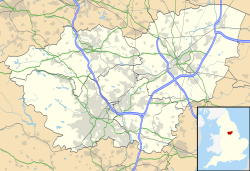| Revision as of 15:58, 16 August 2020 editDormskirk (talk | contribs)Autopatrolled, Extended confirmed users, Pending changes reviewers, Rollbackers409,943 edits →Architecture and features: exp← Previous edit | Revision as of 16:08, 16 August 2020 edit undoDormskirk (talk | contribs)Autopatrolled, Extended confirmed users, Pending changes reviewers, Rollbackers409,943 edits →History: expNext edit → | ||
| Line 39: | Line 39: | ||
| During the ] a bomb exploded in Barker's Pool, damaging the pillars of the building. The scars of the explosion can still be seen to this day.<ref>{{cite web|url=https://www.sheffieldcityhall.co.uk/our-history |title=Our history|publisher=Sheffield City Hall|accessdate=16 August 2020}}</ref> In 2005, the City Hall and its surroundings were refurbished and re-developed at a cost of £12.5 million.<ref name=Anderson/> | During the ] a bomb exploded in Barker's Pool, damaging the pillars of the building. The scars of the explosion can still be seen to this day.<ref>{{cite web|url=https://www.sheffieldcityhall.co.uk/our-history |title=Our history|publisher=Sheffield City Hall|accessdate=16 August 2020}}</ref> In 2005, the City Hall and its surroundings were refurbished and re-developed at a cost of £12.5 million.<ref name=Anderson/> | ||
| Performers at the City hall have included the ], ], in December 1932, the American ], ], in April 1954 and the American ], ] in March 1959.<ref>{{cite web|url=https://sheffieldmusicarchive.co.uk/sheffield-city-hall/sheffield-city-hall-listing/|title=Sheffield City Hall|publisher=Sheffield Music Archive|accessdate=16 August 2020}}</ref> | |||
| ==Architecture and features== | ==Architecture and features== | ||
Revision as of 16:08, 16 August 2020
Not to be confused with Sheffield Town Hall.
 | |
 | |
| Address | Barkers Pool Sheffield England |
|---|---|
| Coordinates | 53°22′51″N 1°28′21″W / 53.3808°N 1.4724°W / 53.3808; -1.4724 |
| Owner | Sheffield International Venues |
| Designation | Grade II* listed building |
| Capacity | 2,271 (Irwin Mitchell Oval Hall) 850 (Ballroom) 500 (Memorial Hall) |
| Construction | |
| Opened | 22 September 1932 (1932-09-22) |
| Architect | E. Vincent Harris |
| Website | |
| www | |
| Listed Building – Grade II* | |
| Designated | 16 January 1981 |
| Reference no. | 1246548 |
Sheffield City Hall is a Grade II* listed building in Sheffield, England which dominates Barker's Pool, one of Sheffield's central squares. It was built and is owned by Sheffield City Council but is now managed by the Sheffield City Trust, under a 99-year lease and is operated by Sheffield International Venues as a venue for concerts and other events in its various rooms.
History
The building was designed in 1920 by E. Vincent Harris but construction was delayed 8 years because of the economic climate in the early 1920s. Eventually construction started with the laying of the foundation stone on 27 June 1929 and, after the works has been undertaken by the local contractor, George Longden & Son, the City Hall was officially opened on 22 September 1932. It was originally proposed in 1916 as a Memorial Hall to commemorate the dead of the Great War but by the time of completion the name had changed to Sheffield City Hall, after some years of controversy.
During the Second World War a bomb exploded in Barker's Pool, damaging the pillars of the building. The scars of the explosion can still be seen to this day. In 2005, the City Hall and its surroundings were refurbished and re-developed at a cost of £12.5 million.
Performers at the City hall have included the violinist, Yehudi Menuhin, in December 1932, the American singer, Nat King Cole, in April 1954 and the American trumpeter, Louis Armstrong in March 1959.
Architecture and features
It is a building in the neo-classical style with a giant portico. The Oval Hall is the largest hall in the building, seating 2,271 people. The Grand Willis III Organ is the largest in Sheffield with over 4,000 pipes and four manuals. The organ sits in a chamber situated behind the large decorative grilles facing the audience. In addition to the Oval Hall, facilities include the Memorial Hall with capacity to seat 425 people and the Ballroom with capacity to seat 400 people.
A pair of four foot high stone Art Deco lions, designed by John Hodge and each weighing 2.5 tonnes, stood at either side of the stage when the main hall first opened in 1932. They were removed in 1962 as part of a refurbishment of the City Hall, apparently because the conductor Sir Thomas Beecham, found them distracting. They were acquired by Tarmac Group for use at their offices at John Hadfield House in Matlock and later removed to their offices in Ettingshall in 1997 before being returned to the foyer of the City Hall, as part of the building's 85th anniversary celebrations, in October 2017.
References
- Historic England. "City Hall (1246548)". National Heritage List for England. Retrieved 20 February 2006.
- ^ Neil Anderson (2012) Sheffield City Hall – celebrating 80 years (ACM Retro, Sheffield) ISBN 978-1-908431-12-7
- "Our history". Sheffield City Hall. Retrieved 16 August 2020.
- "Sheffield City Hall". Sheffield Music Archive. Retrieved 16 August 2020.
- ^ "Business Events and Conferencing". Sheffield City Hall. Retrieved 16 August 2020.
- "Details of lions". Public Art in Sheffield. Retrieved 31 October 2017.
- "John Hodge, pair of lions, 1932". Public Art in Sheffield. Retrieved 16 August 2020.
- "Civic pride restored as lions head home to Sheffield City Hall". BBC News. Retrieved 31 October 2017.
Further reading
- Anderson, Neil (2012) Sheffield City Hall – 1932–2012 ACM Retro ISBN 978-1-908431-12-7
